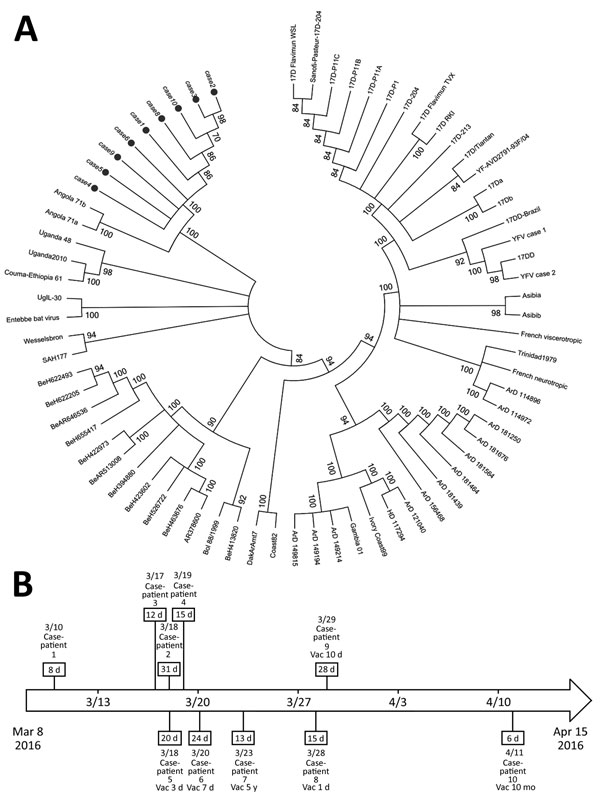Volume 24, Number 7—July 2018
Research Letter
Late or Lack of Vaccination Linked to Importation of Yellow Fever from Angola to China
Figure

Figure. Phylogenetic analysis of yellow fever viruses and clinical courses for persons with yellow fever cases imported from Angola to China. A) Phylogenetic relationships among the yellow fever viruses from samples obtained from 9 case-patients (black circles). An unrooted dendrogram with maximum-likelihood by genome sequences represents the phylogenetic relationships. Clusters with bootstrap support values <70 were integrated; bootstrap values are shown on the branches. B) Dates of hospital admission, detection of virus in urine, and vaccination status for the 10 case-patients investigated. Case-patients 1–4 were not vaccinated. Numbers in boxes indicate longest interval from symptom onset to urine virus sequence detection. Vac, interval from previous vaccination to symptom onset.
1These authors contributed equally to this article.